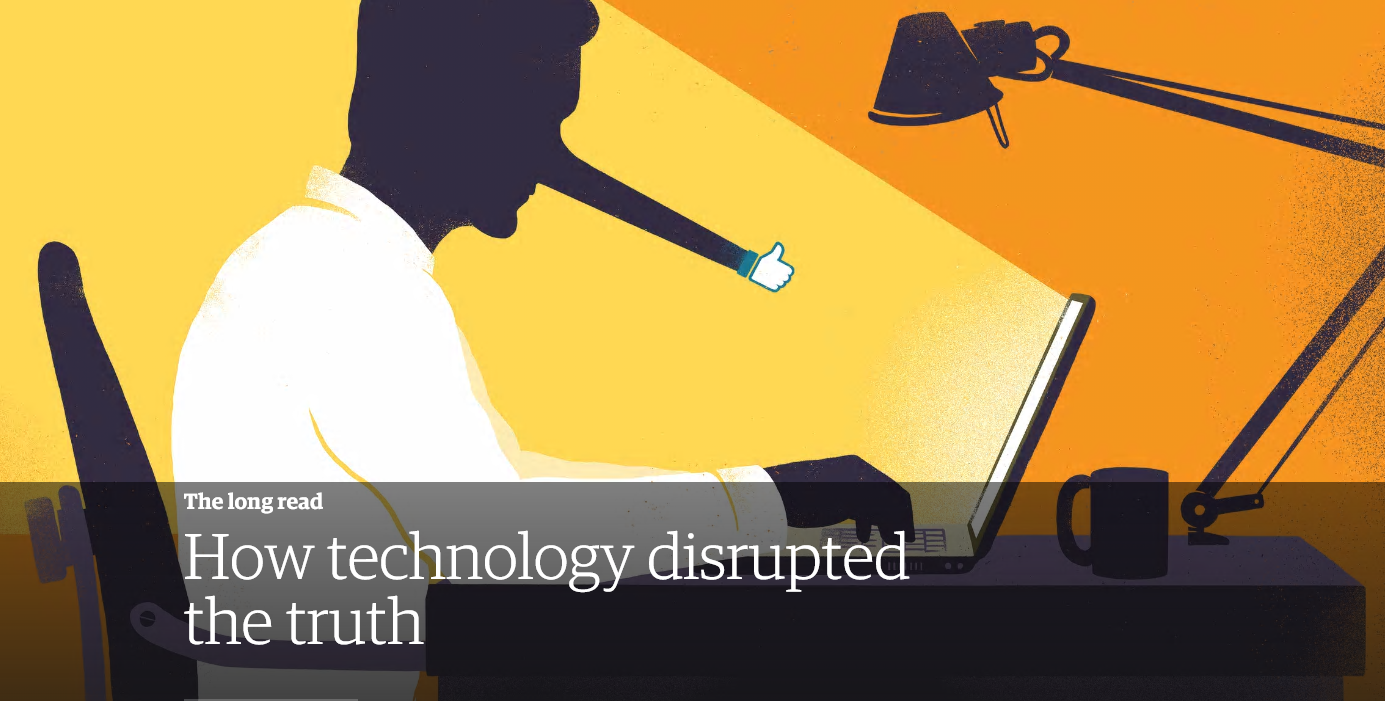How technology disrupted the truth
From Katherine Viner’s article for The Guardian:
When a fact begins to resemble whatever you feel is true, it becomes very difficult for anyone to tell the difference between facts that are true and “facts” that are not. The leave campaign was well aware of this – and took full advantage, safe in the knowledge that the Advertising Standards Authority has no power to police political claims.
A few days after the vote, Arron Banks, Ukip’s largest donor and the main funder of the Leave.EU campaign, told the Guardian that his side knew all along that facts would not win the day.
“It was taking an American-style media approach,” said Banks. “What they said early on was ‘Facts don’t work’, and that’s it. The remain campaign featured fact, fact, fact, fact, fact. It just doesn’t work. You have got to connect with people emotionally. It’s the Trump success.”
It was little surprise that some people were shocked after the result to discover that Brexit might have serious consequences and few of the promised benefits. When “facts don’t work” and voters don’t trust the media, everyone believes in their own “truth” – and the results, as we have just seen, can be devastating.
How did we end up here? And how do we fix it?
Twenty-five years after the first website went online, it is clear that we are living through a period of dizzying transition. For 500 years after Gutenberg, the dominant form of information was the printed page: knowledge was primarily delivered in a fixed format, one that encouraged readers to believe in stable and settled truths.
Now, we are caught in a series of confusing battles between opposing forces: between truth and falsehood, fact and rumour, kindness and cruelty; between the few and the many, the connected and the alienated; between the open platform of the web as its architects envisioned it and the gated enclosures of Facebook and other social networks; between an informed public and a misguided mob.
(…)
In the digital age, it is easier than ever to publish false information, which is quickly shared and taken to be true – as we often see in emergency situations, when news is breaking in real time. To pick one example among many, during the November 2015 Paris terror attacks, rumours quickly spread on social media that the Louvre and Pompidou Centre had been hit, and that François Hollande had suffered a stroke. Trusted news organisations are needed to debunk such tall tales.
Sometimes rumours like these spread out of panic, sometimes out of malice, and sometimes deliberate manipulation, in which a corporation or regime pays people to convey their message. Whatever the motive, falsehoods and facts now spread the same way, through what academics call an “information cascade”.
As the legal scholar and online-harassment expert Danielle Citron describes it, “people forward on what others think, even if the information is false, misleading or incomplete, because they think they have learned something valuable.” This cycle repeats itself, and before you know it, the cascade has unstoppable momentum. You share a friend’s post on Facebook, perhaps to show kinship or agreement or that you’re “in the know”, and thus you increase the visibility of their post to others.

